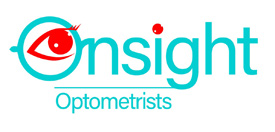Caring for your vision doesn’t begin and end with glasses, sunglasses, contact lenses, and lasik surgery. There are many things you can do to protect your eyes. Studies have shown that a diet high in the nutrients lutein and zeaxanthin found in most vegetables, especially dark leafy vegetables, can help prevent sight-robbing diseases like macular degeneration and cataracts.
Eye diseases like glaucoma and diabetic retinopathy, visual trauma and cuts to the eye, often result in permanent vision loss. Fortunately, many of these injuries are preventable. Regular use of eye protection glasses on the job or working around the house, suitable sunglasses when outdoors or playing sports can prevent up to 90% of eye injuries and trauma. Always be safe and think first.
If you feel the action you are about to take can damage your eyes or any part of your body, rather stop and try an alternative method or wear protective clothing and eye gear.
Eye Tests
As important as these tips are, an essential component of healthy vision is a regularly-scheduled comprehensive eye examination. Optometrists are specially trained to detect and treat problems and conditions of the eye, and can help you get the most from your vision.
Computer Vision Syndrome
Patients can struggle with Computer Vision Syndrome and over-exposure to ultra-violet rays. If you suffer from these all you would need are the correct prescription glasses or sunglasses and your experience any of these symptoms would be greatly minimised or halted altogether. You will also be preventing further damage to your eyes.
Children’s Eye Care
Is your child achieving at school?
Does your child sit too close to the TV or to books?
Do they rub their eyes excessively; have headaches or frequently lose their place when reading?
Irlens Syndrome
The Irlen Method is non-invasive technology that uses coloured overlays and filters to improve the brain’s ability to process visual information. It is the only method scientifically proven to successfully correct the processing problems associated with Irlen Syndrome. This technology can improve reading fluency, comfort, comprehension, attention, and concentration while reducing light sensitivity. This is not a method of reading instruction. It is a colour-based technology that filters out offensive light waves, so the brain can accurately process visual information.
